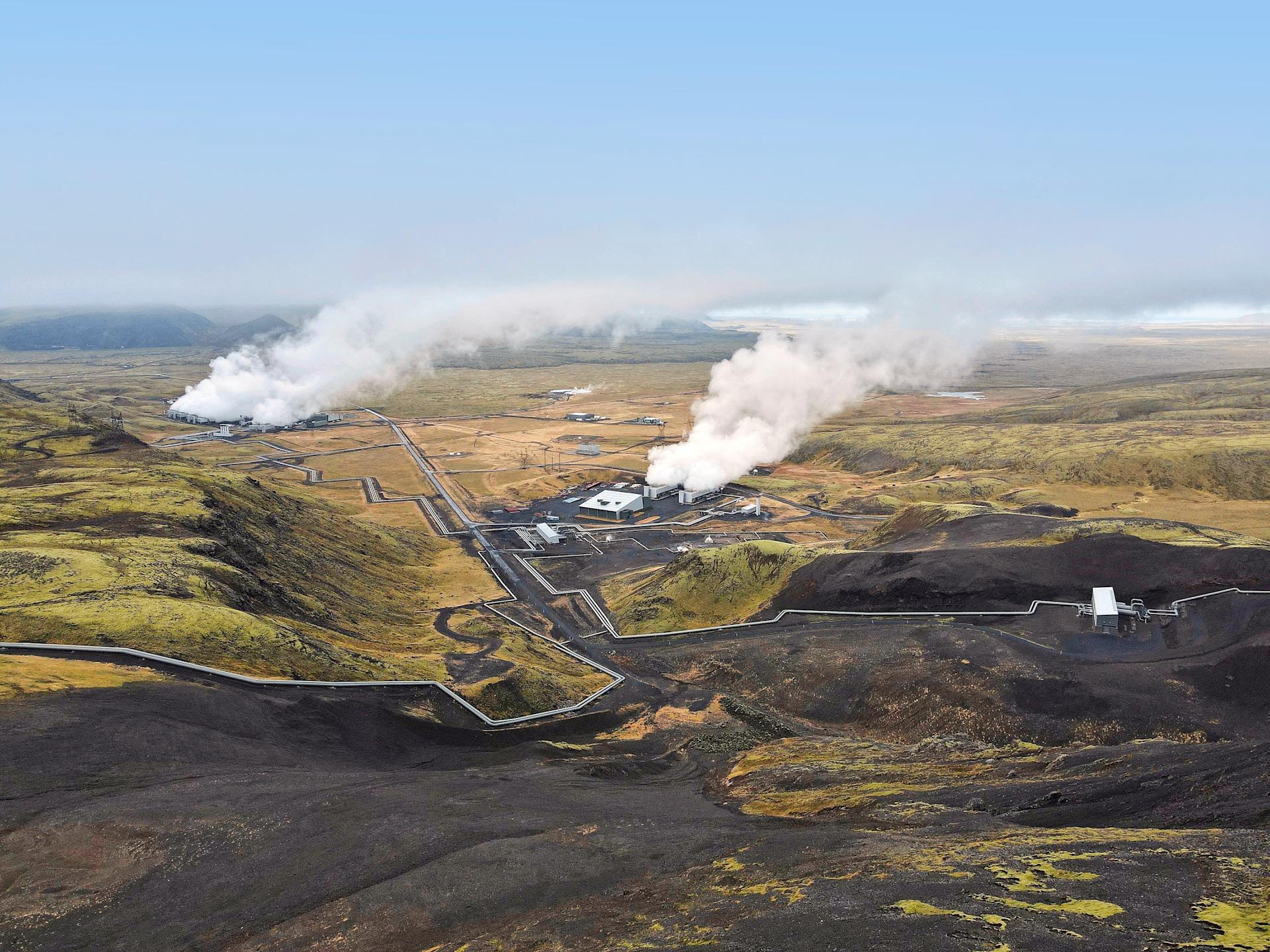
Food waste
Saving food and helping people
A visit to "Tischlein deck dich": members of the FMC Executive Board support the team on site.
navigation

Climate crisis
New approaches are aiming to capture and store CO₂ from the atmosphere. Is this the solution to the climate crisis? Not quite, unfortunately. This article outlines the potential and limitations offered by four promising methods.
Let's not beat about the bush: all of us have to reduce our greenhouse gas emissions massively if we are ever to hit the target of eliminating them completely. Switzerland has until 2050 to achieve net zero, as laid out in the Paris Agreement. However, in certain sectors – such as agriculture, industry and recycling – it's not going to be possible to eliminate greenhouse gas emissions in their entirety. This is why attempts are being made to capture and store CO₂ from the atmosphere. In industry jargon, this is known as negative emissions technology.
It goes without saying that cutting our emissions will always be cheaper and easier than extracting greenhouse gases after the fact. The long-term strategy of the Federal Office for the Environment is based on having to offset around 12 million tonnes of CO₂ per year.
Trees lock away carbon in their leaves, branches and trunks through photosynthesis. This means woodland is a natural carbon sink and absorbs around 2.5 million tonnes of CO₂ per year in Switzerland alone. In order for woodland to be able to fulfil this function, even in the face of climate change, the right trees need to be planted in the right places.
The construction sector also offers a great deal of promise: timber sequesters CO₂ even after it has been built into a structure. Building with wood also generates far fewer emissions than building with steel and concrete. The annual sequestration potential is around 1 to 2 million tonnes of CO₂.
Advantages
Forestry is cheap.
The transport routes for domestically produced construction timber are short.
Disadvantages
Space is limited. In Switzerland, 32% of the land surface area is forested.
As conditions become hotter and drier, there is an increased risk of forest fires, which would release the CO₂ back into the atmosphere.
Soil is also a natural carbon sink. The top layer, known as topsoil, contains broken-down organic matter. The carbon in this layer of soil boosts its quality and fertility. Disturbing the soil as little possible, as is practised in regenerative agriculture, helps to minimise the amount of CO₂ escaping from the soil. This involves regularly leaving arable land to lie fallow and revegetate, ideally with grass-clover leys, as uncovered soil releases more CO₂ back into the atmosphere.
Even more CO₂ can be sequestered by introducing biochar into the soil. Biochar is made up of biomass that has been carbonised at high temperatures and in the absence of oxygen, and is highly stable. Soil and topsoil have the capacity to sequester 2.7 million tonnes of CO₂ through regenerative agriculture and a further 2.2 million tonnes with the addition of biochar.
Advantages
It's reasonably cheap.
Topsoil increases the capacity of soil to store water and nutrients.
Regenerative agriculture makes soil more resilient and promotes more stable yields.
Disadvantages
The sequestration is not necessarily permanent: if the agricultural practices change, for example under a new tenant farmer, the CO₂ could very easily be released back into the atmosphere.
Before biochar can be deployed at a large scale, its environmental impacts need to be investigated.
After a couple of decades, the soil will be saturated.
Plant remains, wood and manure contain carbon. When this biomass is burned in a power station or wood burner, this carbon is released back into the atmosphere in the form of CO₂. If this CO₂ is filtered directly from the flue gas before reaching the atmosphere, then liquefied and stored in the ground, this is known as bioenergy with carbon capture and storage (BECCS).
There are currently no BECCS facilities in Switzerland and no prospects for suitable storage locations. Norway, on the other hand, already has an operational carbon store under the North Sea, but Switzerland's CO₂ would have to be transported there by lorry or train and ship. The construction of pipelines is also being discussed.
Advantages
In theory, this method could be used to store large amounts of CO₂; around 5.1 million tonnes per year.
The deeper in the ground the CO₂ is stored, the more secure and long-lasting the storage will be.
Disadvantages
The storage location has to be extremely stable, with a low risk of earthquakes, and it requires porous rock such as basalt that binds the CO₂.
Transport and storage entail significant costs and environmental hazards.
Imagine a device, which – similar to an enormous vacuum cleaner – sucks in ambient air through a filter. This technology is called direct air carbon capture and storage. The largest commercial facility to date is in Iceland and is operated by the Swiss company Climeworks. It filters up to 4,000 tonnes of CO₂ from the air per year – equivalent to the emissions produced by 286 Swiss inhabitants.
Advantage
Location-independent: in theory, filtering facilities of this kind could be set up anywhere.
Disadvantages
The technology requires a very large amount of energy and is extremely expensive.
It also raises of the question of where to find suitable locations with sufficient capacity to store the extracted carbon.
Sustainability is part of our culture and we still have plenty more on our agenda. Learn more about it in our Stories!